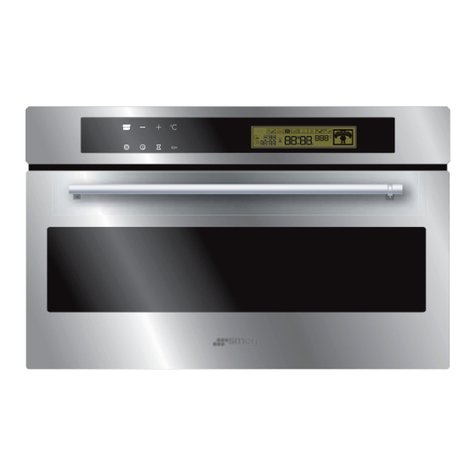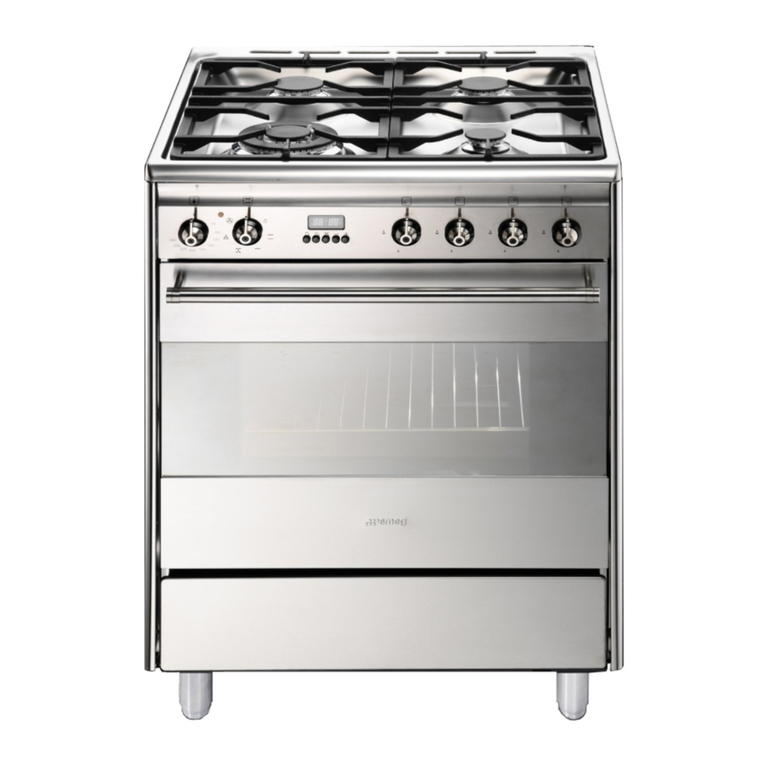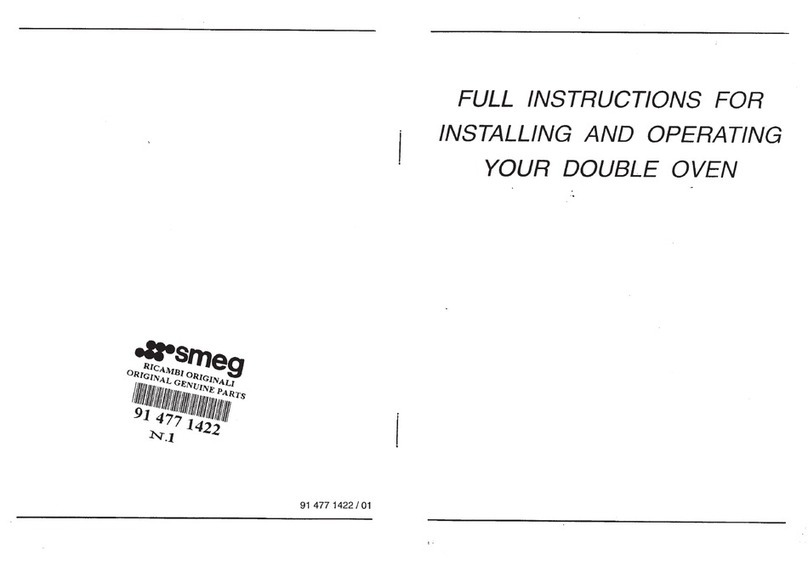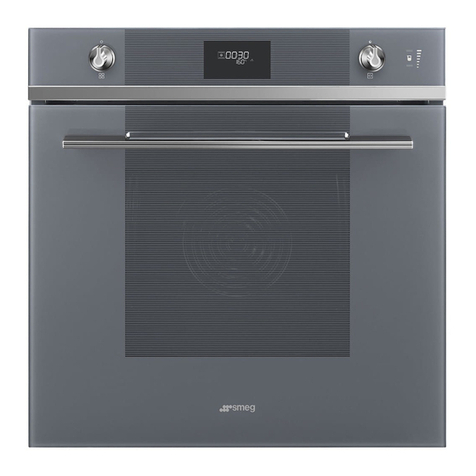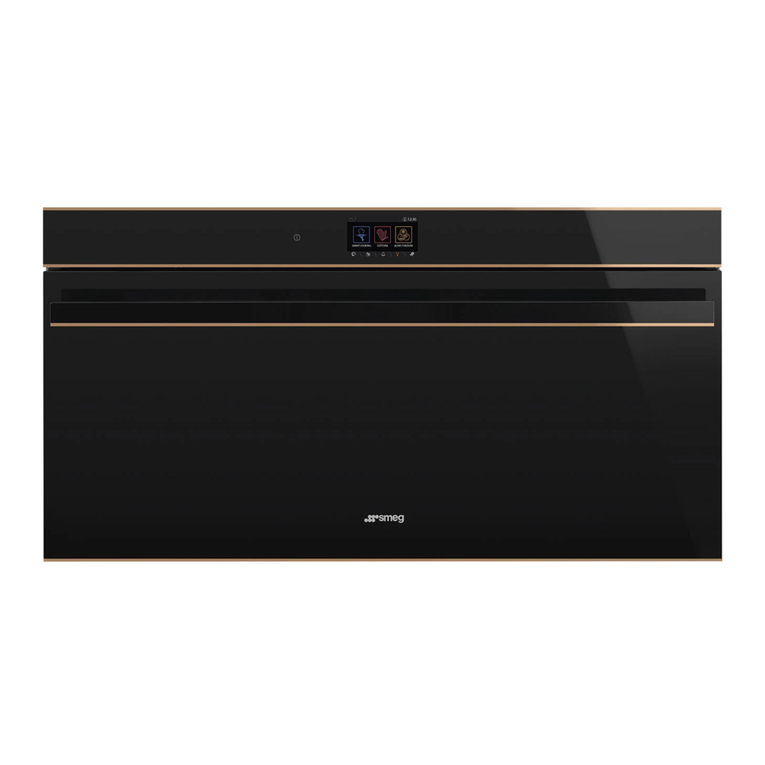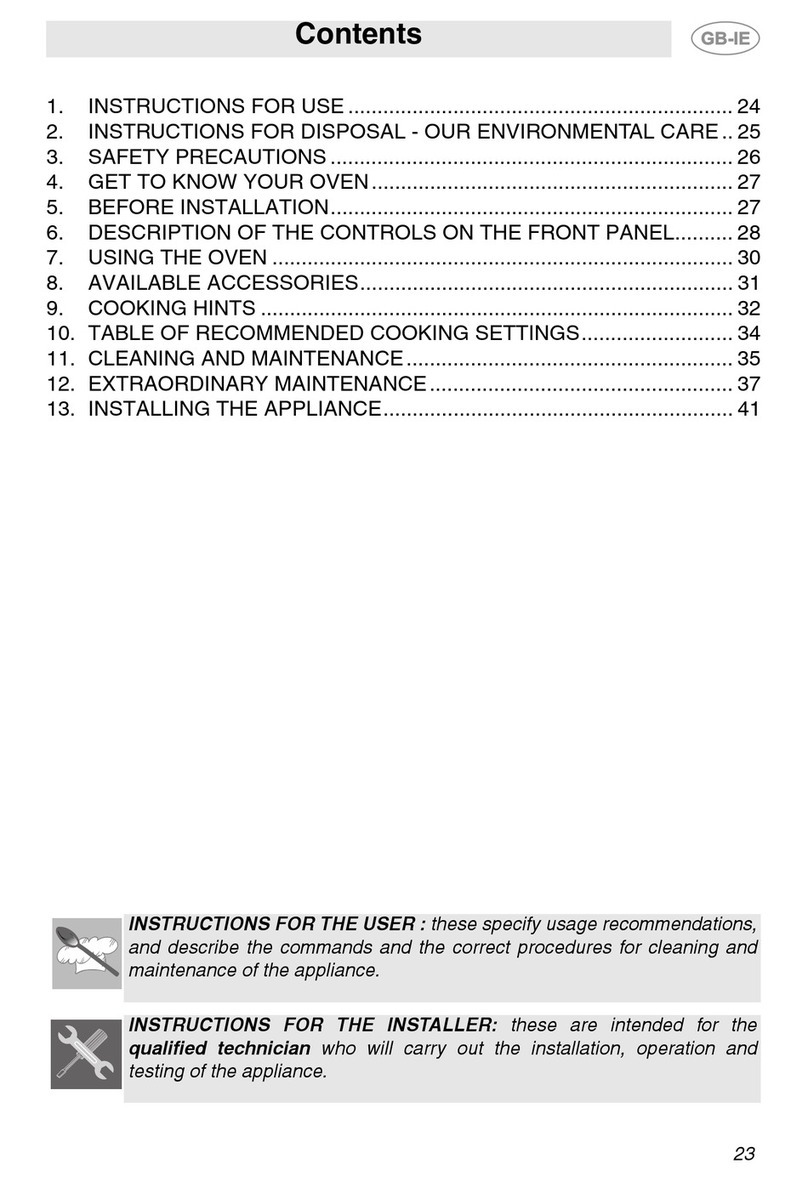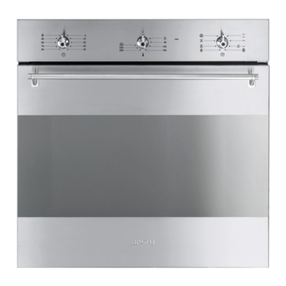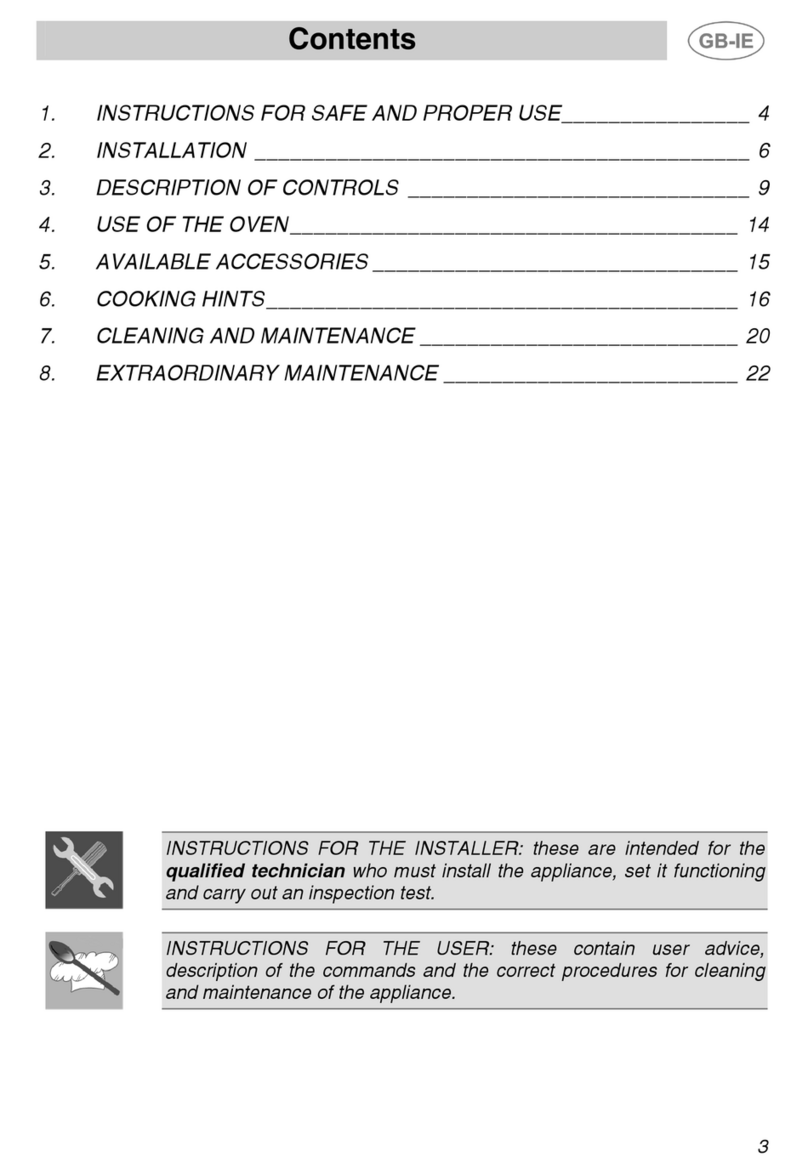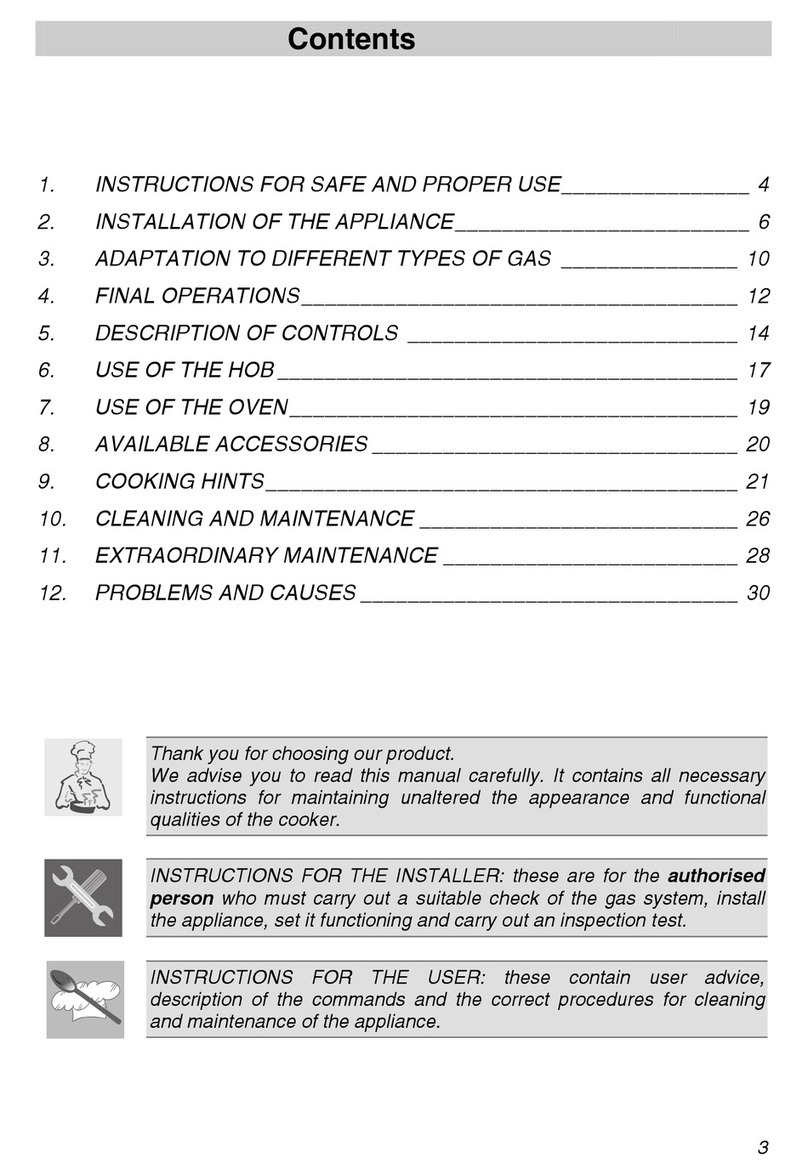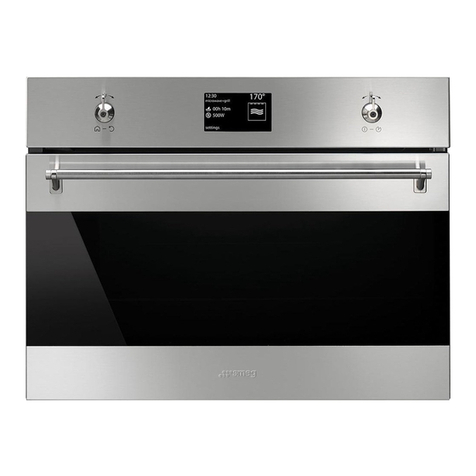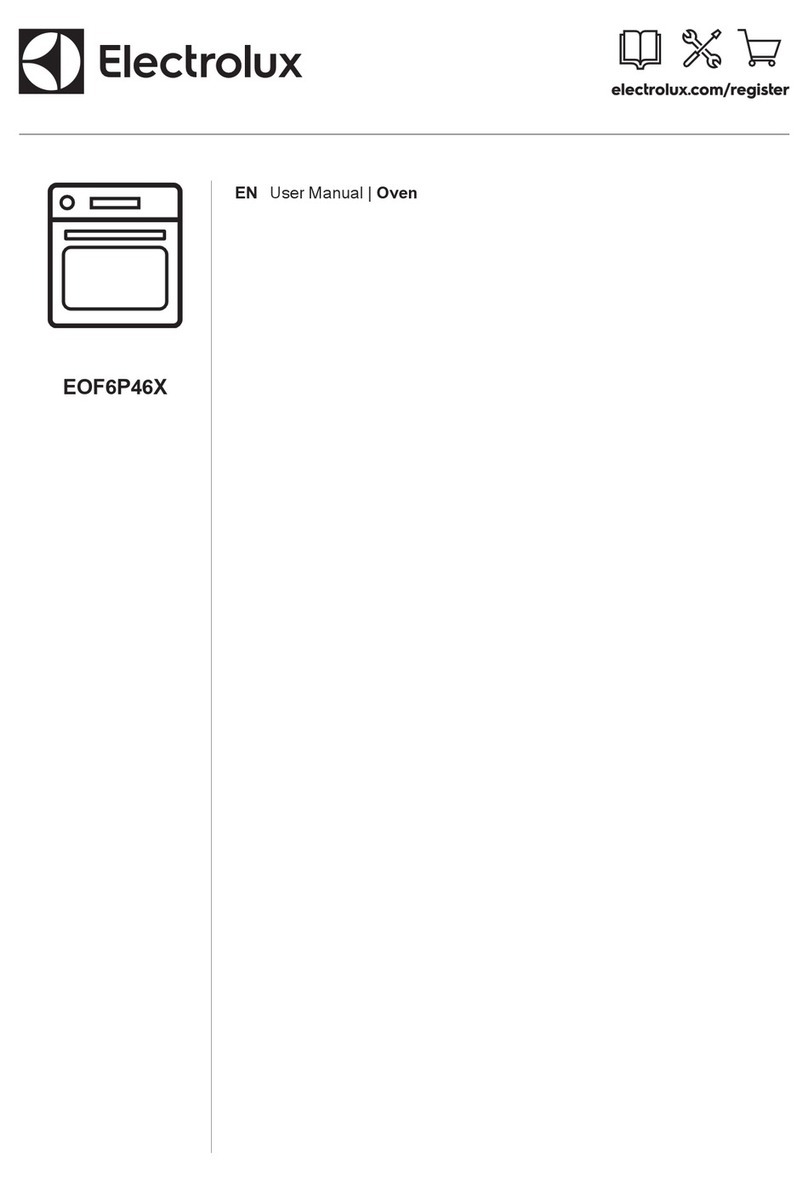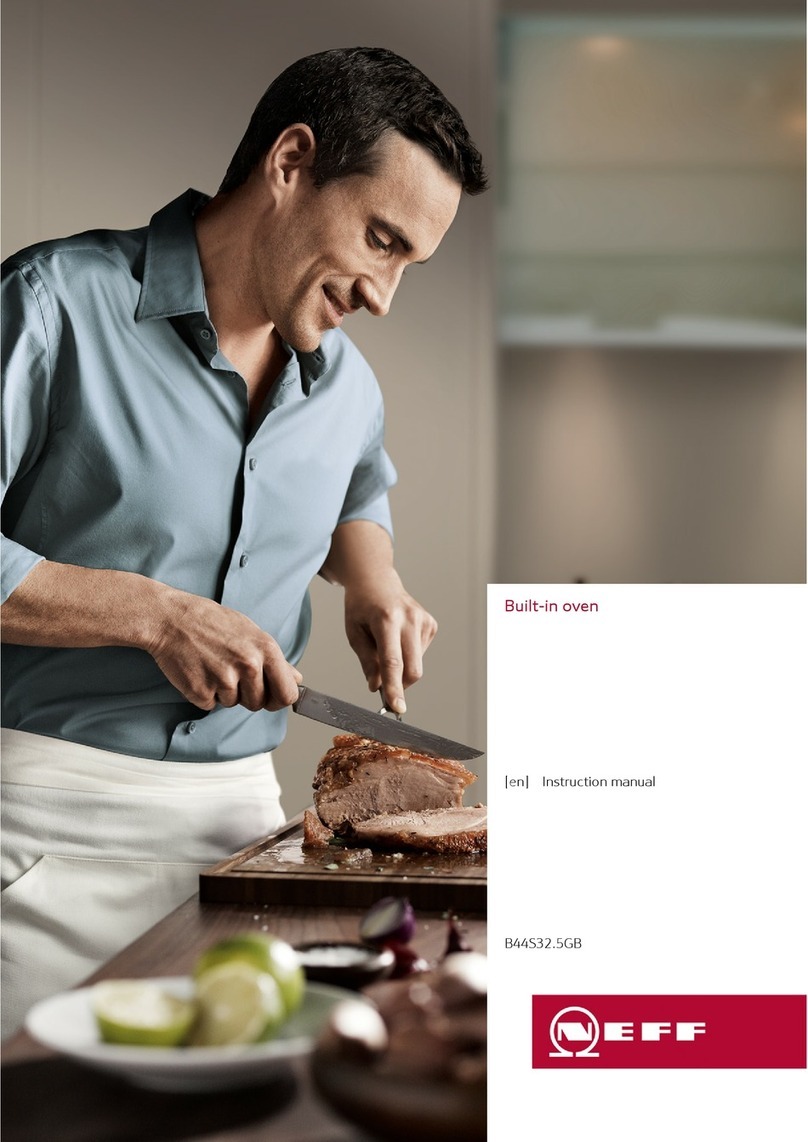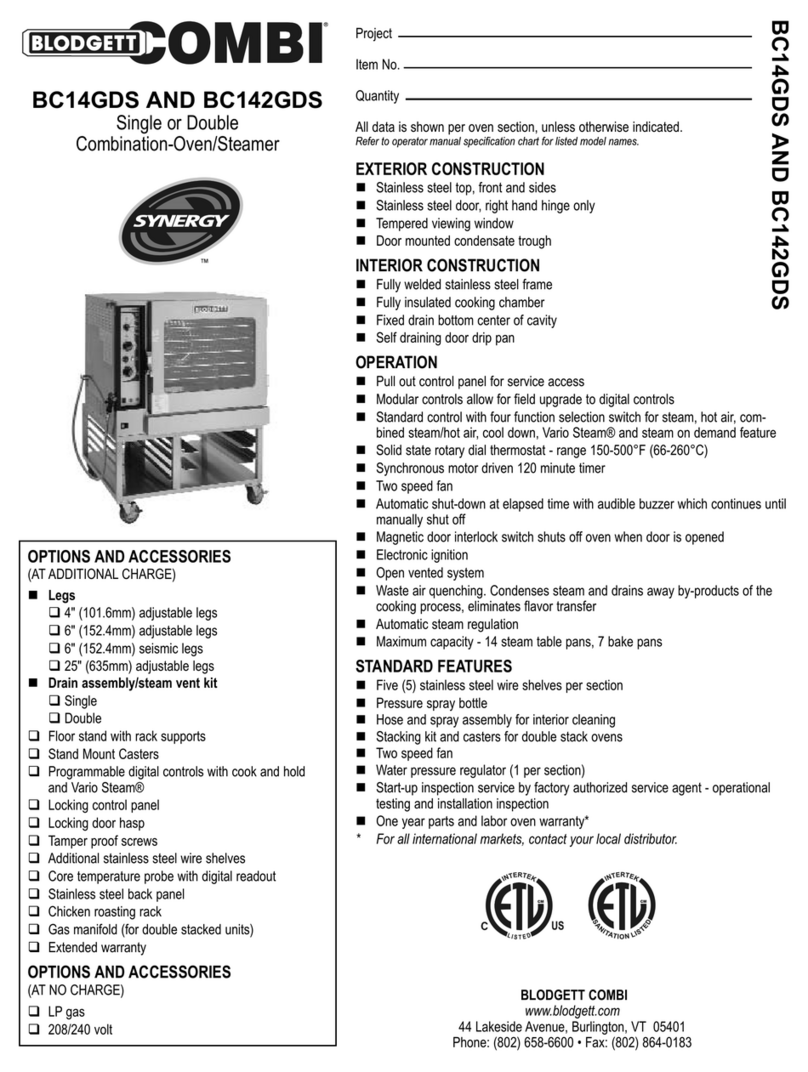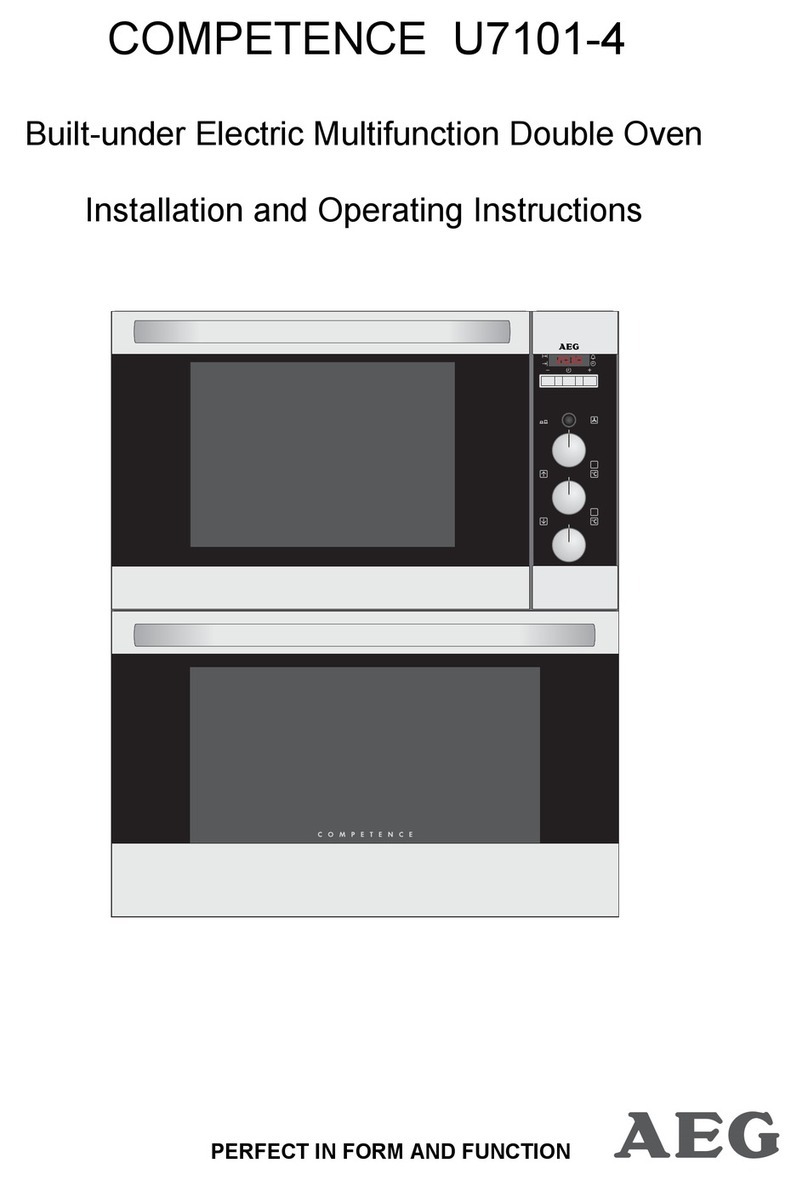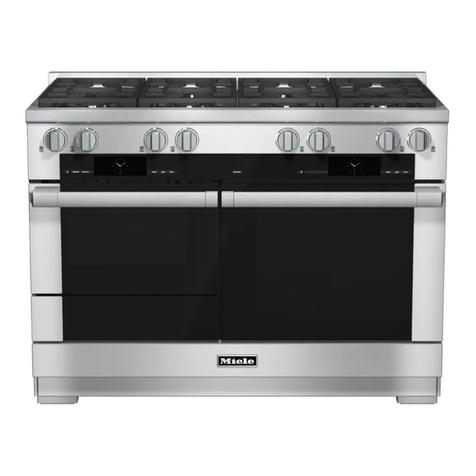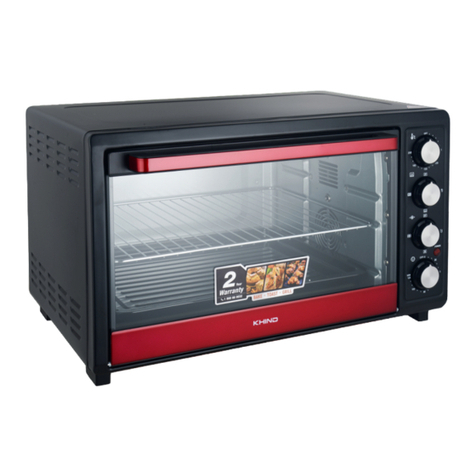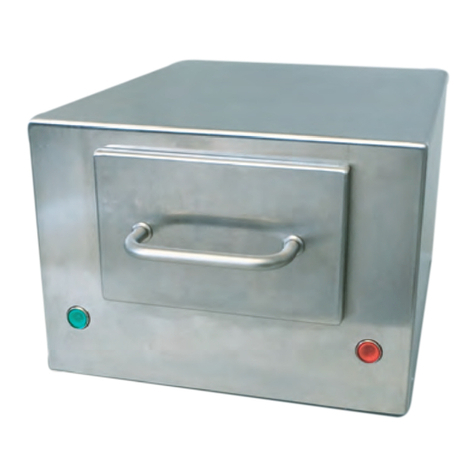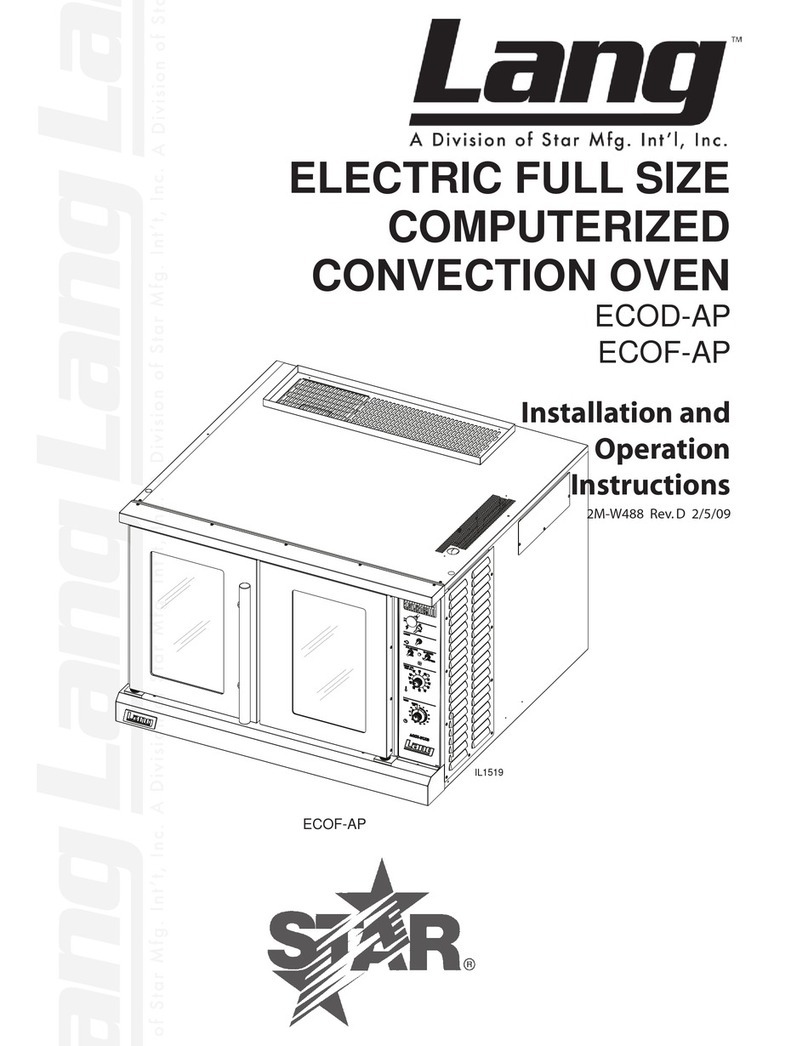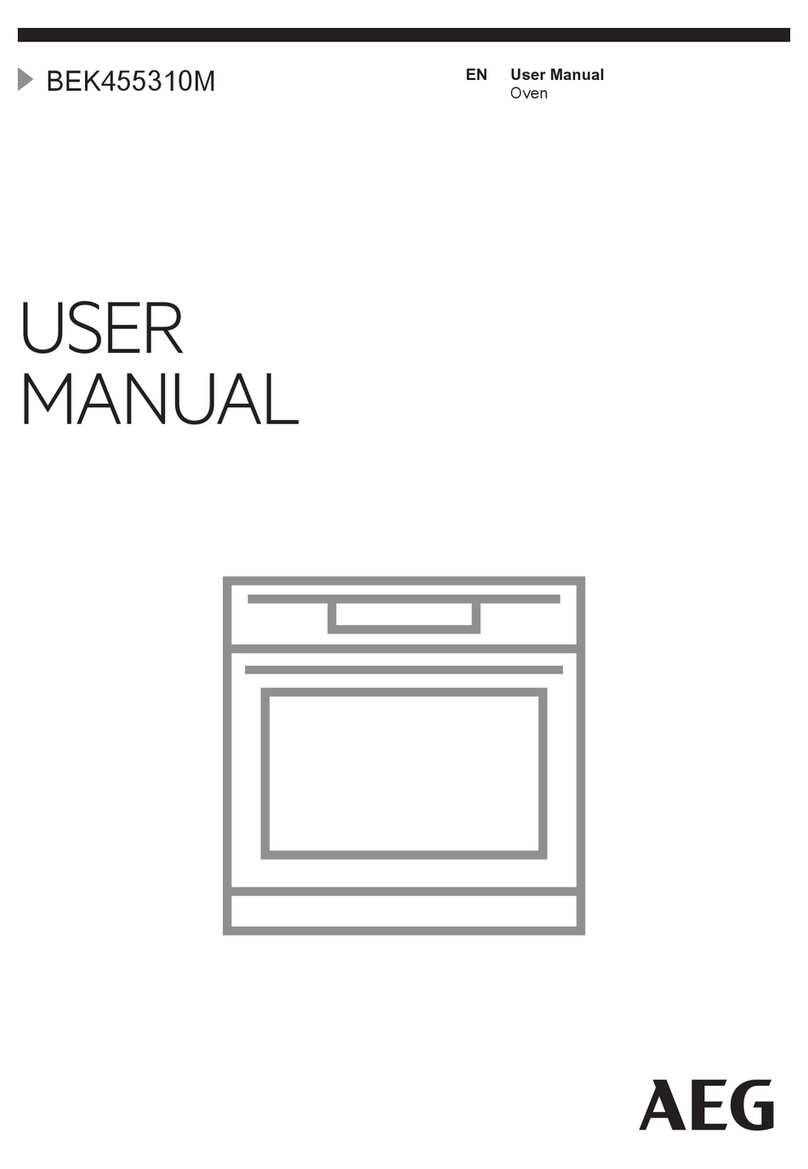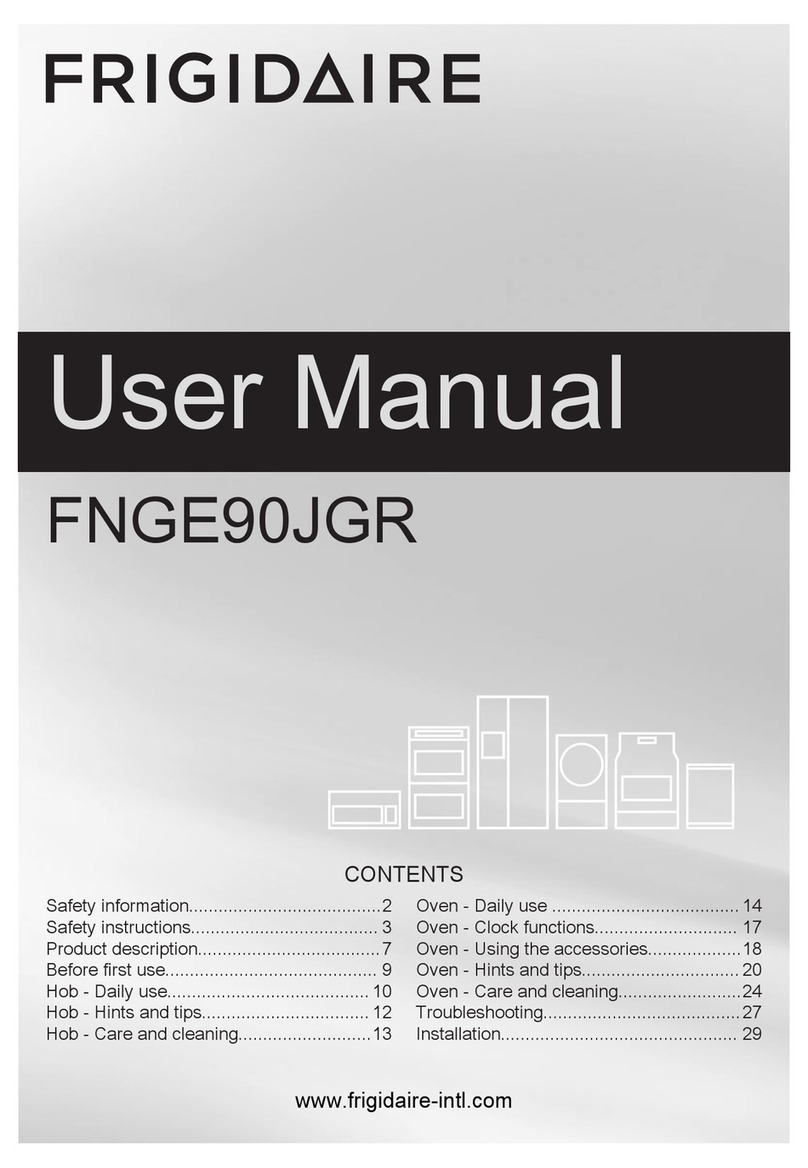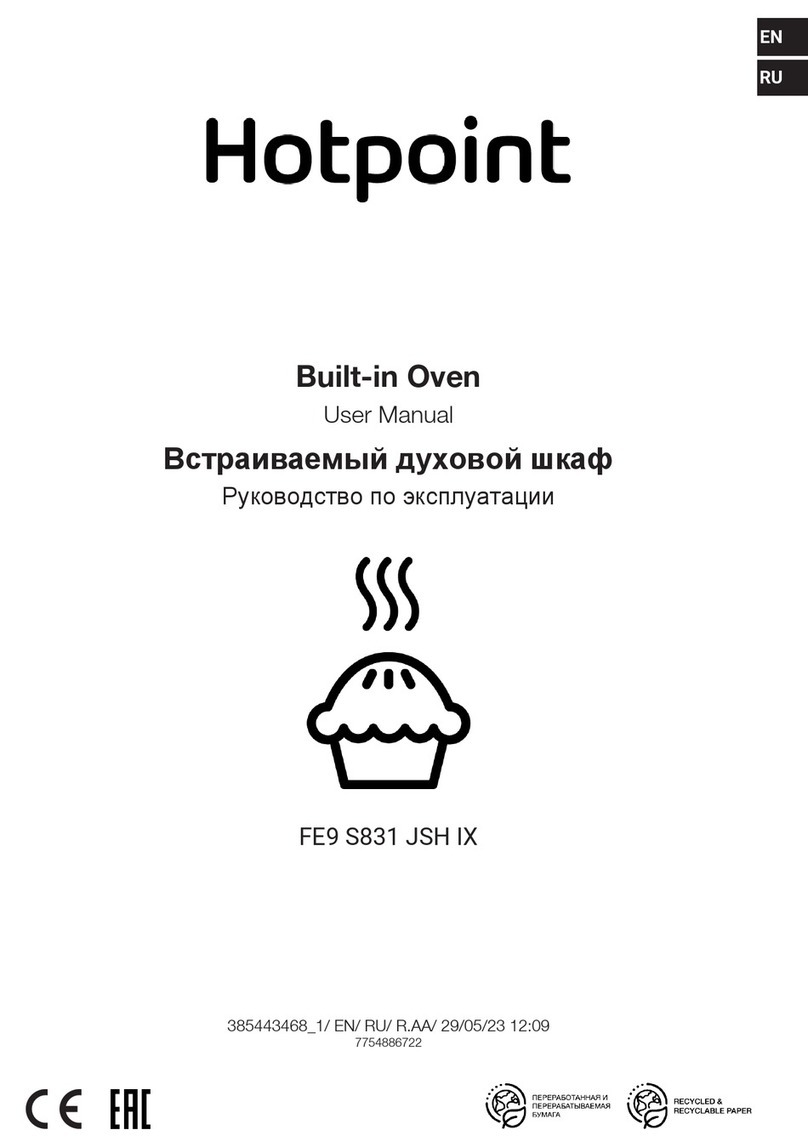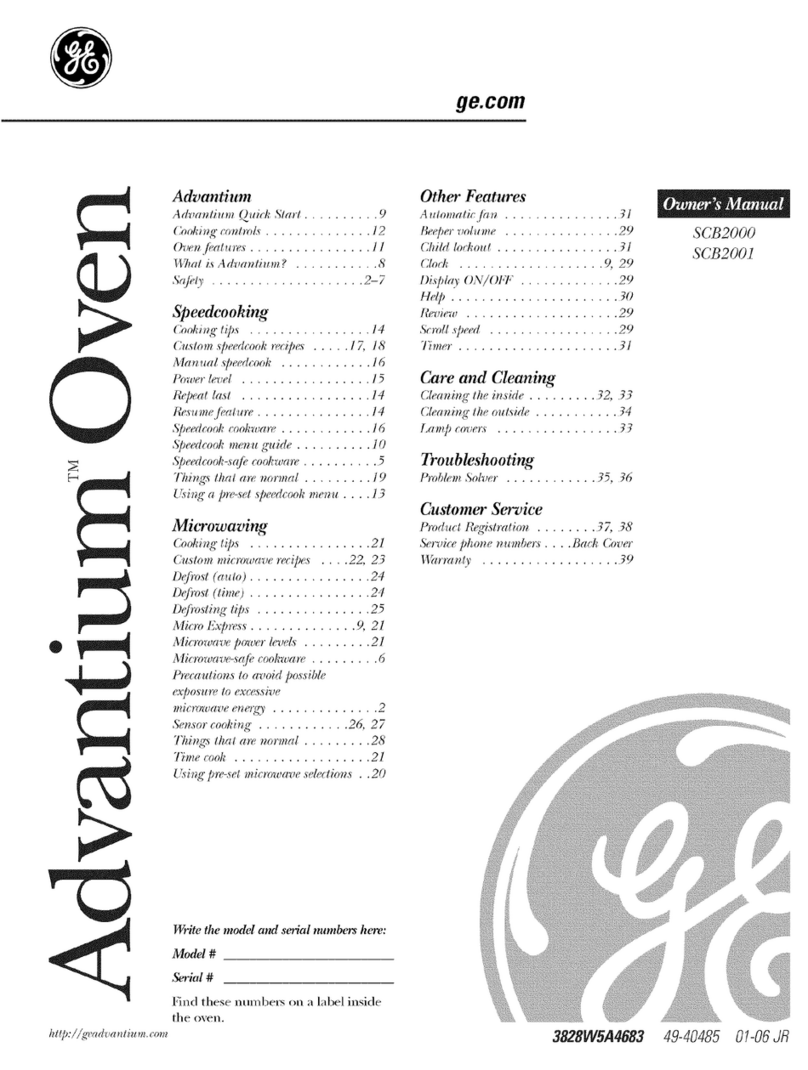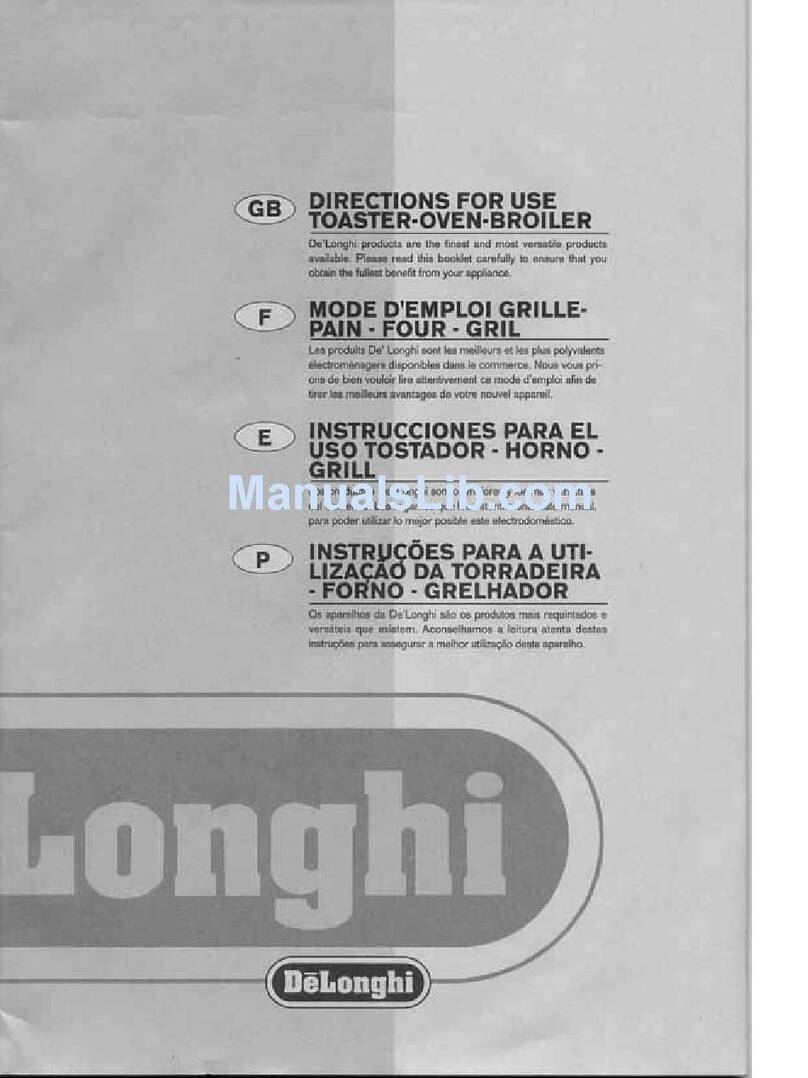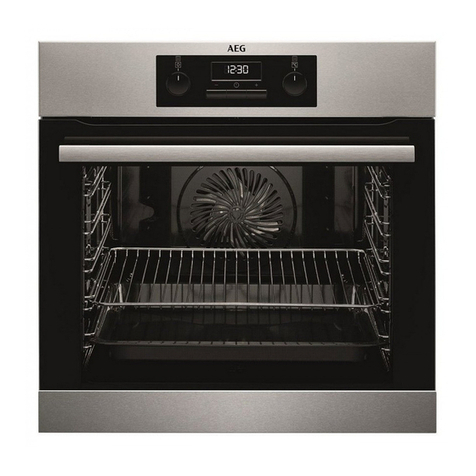Use
12
3.5 Cooking advice
General advice
• Use a fan-assisted function to achieve
uniform cooking at several levels.
• It is not possible to shorten cooking times
by increasing the temperature (the food
could be overcooked on the outside and
undercooked on the inside).
Bottom
The heat coming just from the
bottom allows you to complete the
cooking of foods that require a
higher bottom temperature, without
affecting their browning. Perfect for
cakes, pies, tarts and pizzas.
Static
As the heat comes from above and
below at the same time, this system
is particularly suitable for certain
types of food. Traditional cooking,
also known as static cooking, is
suitable for cooking just one dish at
a time. Perfect for all types of roasts,
bread and cakes and in any case
particularly suitable for fatty meats
such as goose and duck.
Grill
The heat coming from the grill
element gives perfect grilling results
above all for thin and medium
thickness meat and in combination
with the rotisserie (where present)
gives the food an even browning at
the end of cooking. Perfect for
sausages, ribs and bacon. This
function enables large quantities of
food, particularly meat, to be grilled
evenly.
Fan-assisted static
The operation of the fan, combined
with traditional cooking, ensures
uniform cooking even with complex
recipes. Perfect for biscuits and
cakes, even when simultaneously
cooked on several levels. (For
multiple-level cooking, we
recommend using the 2nd and 4th
shelves.)
Fan-assisted grill
The air produced by the fan softens
the strong heatwave generated by
the grill, grilling perfectly even very
thick foods. Perfect for large cuts of
meat (e.g. shin of pork).
Fan-assisted bottom
The combination of the fan with just
the lower heating element allows
cooking to be completed more
rapidly. This system is
recommended for sterilising or for
finishing off the cooking of foods
which are already well-cooked on
the surface, but not inside, which
therefore need a little more heat.
Perfect for any type of food.
In pyrolytic models, the special
defrosting and proving functions are
brought together under the same
function.
Vapour Clean
This function makes cleaning easier
using the steam produced by a little
quantity of water poured onto the
appropriate drawing placed on the
bottom.

